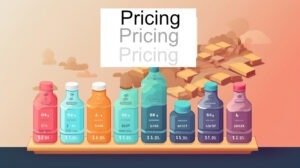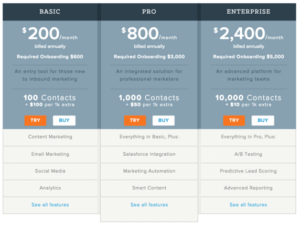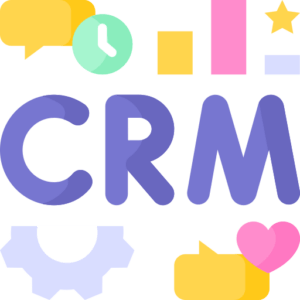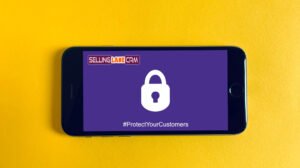Ultimate Guide: How to Set the Correct Price for Your Services.

Setting the right price for your services or product is a delicate balance. Price too high, and you risk alienating potential customers. Price too low, and you might undervalue your services, leaving money on the table. This guide will walk you through the steps to find that sweet spot, ensuring you’re compensated fairly while offering value to your clients.
- 1. Understand Your Costs Before setting a price, it’s essential to have a clear understanding of your costs. This includes:
- Direct Costs: These are the costs directly associated with delivering your service, such as materials or labor.
- Indirect Costs: Overheads like rent, utilities, and salaries for non-production staff.
- Profit Margin: Decide on a percentage of profit you want to make on top of your costs.
- Research the Market Understanding what competitors charge for similar services provides a benchmark. However, ensure you’re comparing apples to apples. Consider factors like service quality, brand reputation, and additional offerings.
- Perceived Value Your services’ value isn’t just about the tangible results you deliver. It’s also about the intangible benefits, such as peace of mind, reliability, or unique expertise. Understand your unique selling proposition and how it adds value to your clients.
- Avoid the Race to the Bottom While competitive pricing is essential, constantly undercutting competitors can be a dangerous game. Not only does it reduce your profit margins, but it can also devalue your services in the eyes of potential clients. Sometimes, a higher price can signal better quality or expertise. Remember, there’s a market for premium services, and many clients are willing to pay more for top-tier solutions.
- Flexibility is Key Fixed pricing isn’t always the answer. Consider offering tiered pricing, packages, or discounts for long-term contracts. This provides options for different client needs and budgets.
- Regularly Review and Adjust The market, your costs, and your services will evolve. Regularly review and adjust your pricing to ensure it remains competitive and reflective of the value you provide.
Bottom Line, setting the right price is a blend of art and science. By understanding your costs, researching the market, and recognizing your unique value, you can set a price that’s fair to both you and your clients. Remember, it’s not always about being the cheapest. It’s about providing undeniable value for the price you charge.
Decoding Pricing Models:
Techniques and Approaches to Set Your Business Apart
Pricing is more than just slapping a dollar amount on your product or service. It’s a strategic tool that can position your business, influence consumer perception, and drive sales. Let’s dive into some of the most popular pricing models, techniques, and approaches that businesses use today.
- Cost-Plus Pricing This is one of the simplest methods. It involves calculating the cost of producing a product and then adding a markup percentage to determine the final price.
Example: If a product costs $50 to produce and you want a 20% profit margin, the price becomes $60. - Value-Based Pricing This model sets prices based on the perceived value to the customer rather than the cost of the product.
Example: A luxury purse brand might price its products in the thousands, not because it costs that much to produce, but because of the prestige and status it offers to customers. - Penetration Pricing This strategy involves setting a low initial price to attract customers and gain market share quickly. The prices are raised once this objective is achieved.
Example: Streaming services offering introductory discounted rates for the first few months. - Skimming Pricing Here, businesses set high prices for new products to capitalize on early buyers willing to pay more. Over time, prices are reduced to attract a broader audience.
Example: New tech gadgets often have high initial prices, which decrease as newer models are introduced. - Dynamic Pricing Prices are adjusted in real-time based on market demand, competitor prices, and other external factors.
Example: Airline ticket prices or hotel room rates that fluctuate based on demand and time. - Bundle Pricing Multiple products are sold together at a lower price than if purchased separately.
Example: A software suite offering word processing, spreadsheet, and presentation tools at a combined lower price. - Psychological Pricing Prices are set based on psychological triggers rather than pure economic factors.
Example: Pricing a product at $9.99 instead of $10 to make it seem more affordable. - Freemium Pricing, Offering basic services for free while charging for advanced features or functionalities.
Example: Mobile apps that are free to download but have in-app purchases for additional features. - Hourly or Time-Based Pricing Common in service industries, where clients are charged based on the time spent.
Example: Lawyers or consultants charging an hourly rate. - And our favorite, Tiered Pricing, offering a product or service at different price points with varying features.
Example: Software packages that come in basic, premium, and enterprise versions.
Final Thoughts Choosing the right pricing strategy is crucial for your business’s profitability and growth. It’s essential to understand your market, costs, and value proposition. Regularly review and adjust your pricing strategy based on feedback, market changes, and business goals. Remember, the right price is a powerful tool in building trust, value, and loyalty among your customers.

Price your business correctly
with Selling Lane CRM
Unlimited Free for Startups – or Upgrade for Only $25
No credit card needed to try, startups get the CRM free forever
Or get the discounted Business Max Plan for $75












